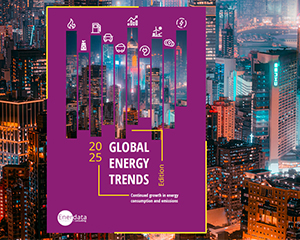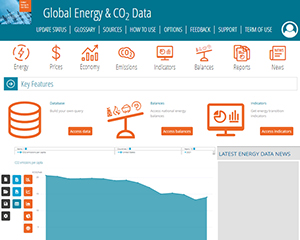Coal and lignite domestic consumption
In 2024, global coal consumption continued to grow at a steady pace (+2.3%), spurred by the ASEAN (+9%) and falling again in OECD countries (-4%).
+5.5%
Rise in coal consumption in India, which now accounts for 16% of global coal consumption.
In 2024, global coal consumption continued to grow at a steady pace (+2.3%), spurred by the ASEAN (+9%) and falling again in OECD countries (-4%).
In 2024, global coal consumption increased again (+2.3%), at a significantly faster pace than over the 2010-2019 period (+0.8%/year).
In the two largest markets, namely China and India, which together accounted for 71% of the global coal consumption, coal consumption increased again in 2024 (+3% and +5%, respectively), due to a higher demand from the power sector in a context of intense heatwaves. These growth rates were slower than in 2023, as higher renewable power generation in both countries and a lower demand from the cement and steel sectors in China contributed to limit the increase. Coal consumption grew by 11% in Indonesia (due to a rising demand from the power sector and nickel refining), in Vietnam, and in Türkiye, and increased in South Africa (+7%), and in Australia to a lesser extent.
On the contrary, coal phase-out policies contributed to reducing coal consumption in OECD countries, such as the USA (-4%), the EU (-11%), Canada, and the UK. As well, rising nuclear power generation helped stabilize coal consumption in Japan and reduced coal demand in South Korea (-6%).
Breakdown by country (Mt)
World
Trend over 1990 - 2024 - Mt
% in total consumption (2024) - Mtoe
Our 2025 edition of Global Energy Trends presents insights on essential energy data.
We have contextualised these findings against long-term climate targets :
- Which must accelerate their efforts to meet 2050 targets?
- What are the underlying drivers explaining why Europe is struggling to achieve the Paris Agreement objectives?
- Which regions are making substantial contributions to climate mitigation?
Need more data? All the information presented in this energy data tool are extracted from Global Energy & CO2 Data service, the most comprehensive and up-to-date database on coal and lignite. Access to the whole coal value chain information: reserves, production, trade, prices, consumption per sector and indicators.
Discover this service


